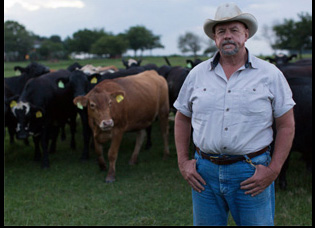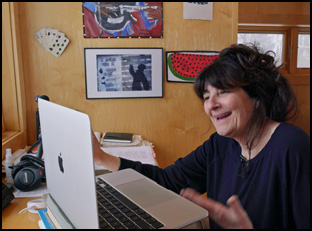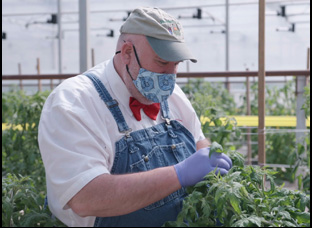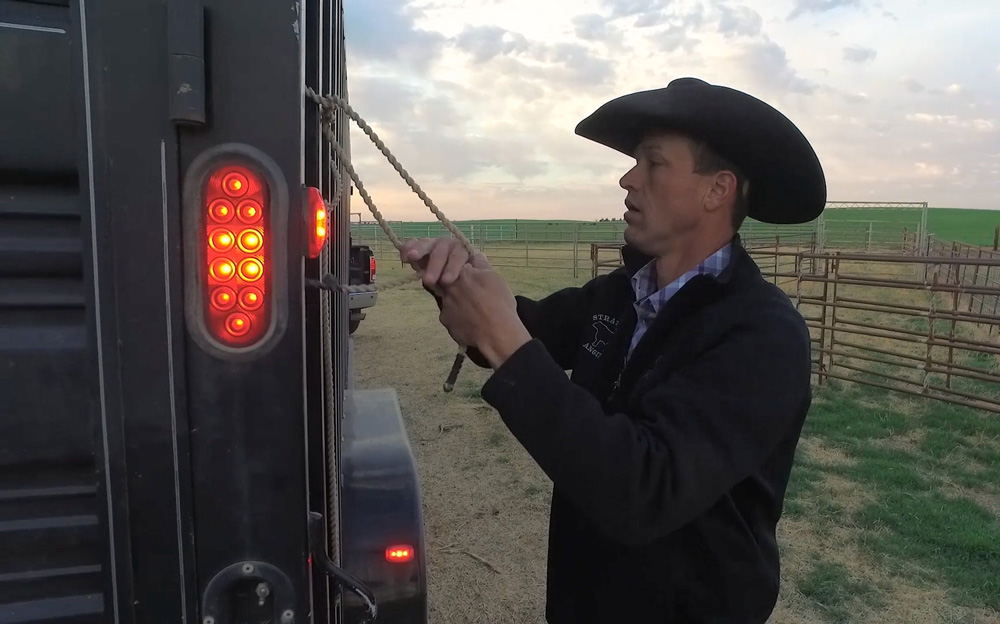At one point in “Food and Country,” Ruth Reichl remembers what it was like to come of age in the culinary world in 1970s Berkeley where “everyone I knew was reading ‘Eating for a Small Planet’” and she naturally became fascinated by Chez Panisse chef Alice Waters, who had the then-revolutionary idea to build a menu around what was available seasonally and locally. As Waters recalls over a Zoom with Reichl, it seemed obvious to her that was the way forward when “All that biodiversity is out there for us.” The two would be talking in person if not for the pandemic and while they share a long friendship, this was not a social call when Reichl started going through her Rolodex as one restaurant after another was threatened with permanent closure after a COVID lockdown shut them down for an indefinite period of time in the spring of 2020.
Although a global pandemic was unforeseeable, it laid bare a reckoning in the food industry that had been brewing for some time when profit margins across the line, from the farmers that grow fruits and vegetables to the wait staff that serves them have never been properly compensated and while casual consumers could finally take notice, even witnessing food supply chain issues on their own when certain produce was no longer available on store shelves, many within the industry were ready to have a conversation about a more sustainable practice moving forward. Reichl was uniquely positioned to facilitate such talks, being revered from her days as a food critic for the New York Times, and in director Laura Gabbert, there’s a filmmaker ideally suited to bring such an engaging dialogue to the screen when after films such as “City of Gold,” her profile of the late L.A. Times food critic Jonathan Gold, and “Ottolenghi and the Cakes of Versailles,” she’s been conscious of how food reflects a broader culture and truly is a product of the soul.
Despite the fact that Gabbert could only film so much outside of Zoom calls when covering the first year of the pandemic as restaurateurs from coast to coast scrambled to survive and farmers had stockpiles of crops that would ultimately go to waste when nowhere that could use them was considered safe, “Food and Country” nonetheless conveys the big picture when connecting what ends up on the plate in front of you to all the labor that went into bringing it there. Although clearly made during a time of despair as Reichl talks with farmers who fear foreclosure and chefs turning their restaurants into pantries to keep their leases, the film offers hope in spotlighting those whose resourcefulness has already paid dividends, if not financially in terms of general morale when the national survey finds Will Harris at White Oak Pastures in Georgia revamping operations to rid it of chemical dependency when natural solutions could be more cost-effective now, Karen Washington of Rise and Root Farm finding fertile territory in the city to make fresh food more affordable in the Bronx and chef Reem Asil reconsidering the business plan for her restaurant in Oakland to give employees equity to counter a decrease in tips.
While Gabbert goes about presenting their ingenuity, the director shows plenty of her own in connecting the dots and turning the obstacles presented by both the time of the film’s production and its abstract subject matter into strengths when what’s discussed in “Food and Country” will surely have reverberations for years to come. Recently, the director took the time to talk about how the film came together against all odds, embracing the immediacy of the perilous moment at hand and how different audiences can take different things away from it.

In March 2020, I was maybe going to just go out and do a little short film about what was happening to Los Angeles restaurants because I was concerned about all these people I’d gotten to know while making “City of Gold,” and I talked to Ruth on the phone and she had an idea about making something much broader. She grasped right away this was going to impact our entire food system, like before even you saw it in the newspaper and even before the supply chain just totally broke. She [said], “I think we need to reach out to food producers, farmers, ranchers, fishermen, policy people, and really tell this story as it’s happening, so that’s what we did.
What was it like to figure out a collaboration with Ruth? She’s not a co-director, but obviously a co-pilot.
Yeah, our collaboration was wonderful, but it was challenging because of the pandemic. The reason you see Zoom calls in the film is because we didn’t know how long the pandemic was going to last. Some people said it would be a few weeks, and I asked Ruth to record her Zoom calls [which] we thought were going to be for just research and development to see who we’d want to follow across the country. But then months went on and on and even though I had a field team out shooting some things and I started to go out and shoot things, what we discovered as we watched those Zoom calls on a weekly basis is that despite them being Zoom calls and not looking very pretty, they captured an intimacy and an immediacy of what was going on because she talked to some of these people every week, liberated from the traditional documentary camera set-up where you go visit someone maybe twice or three times and try to tell a story in present tense, she was capturing these things in the moment. Also because of her empathy and reporting acumen and her knowledge base, she was able to really elicit very intimate and revealing interviews.
I would suspect this is no less rigorous than what your usual process is for a film like this, but the subject is so sprawling. Was this any different to get your arms around to figure out what the stories were?
It was by far the toughest film to edit from that perspective. Food touches every part of society, so we’d have a whole section about NAFTA in one version of the film and you can go down so many different rabbit holes and it was hard to wrap our arms around it. I really struggled because I generally don’t like a documentary that’s an ensemble because you ultimately have favorite stories and those are harder stories to tell. They can be done very well, but I just thought to myself when we were editing this film, I can’t believe I’m making this. Basically 10 different characters. But we felt each story really told a different sort of piece of the food system story and where we are and how the pandemic really laid bare our very deep and serious vulnerabilities in our food system.
Alice Waters makes perfect sense as a through line and you’ve got some culinary stars on hand such as Grant Achatz and Brandon Jew, which of course give it marquee value, but was that much of a consideration in balancing this out when you’re spending time at every part of the food chain?
It was. Ruth and I happened to be much more drawn to the stories of people that were not well-known. Even Marcus Samuelsson is in the movie for a little while and he struggled in the beginning, but he has a whole restaurant group and is not as vulnerable as someone like Minh Phan who had one little restaurant in Los Angeles, so they had a different arc to tell and we really narrowed it down by [who] was a character working outside of the industrialized system, whether it’s restaurants or farming and if they were, did that give them more flexibility to pivot or less and how did they survive? So each story told a different piece of the larger story. But to me, someone like Alice had to be in the film because she is one of the first restauranteurs who ever began skipping the middleman and just buying straight from the farmer. She’s inspired so many chefs and [she and Ruth Reichl] do have a deep friendship, so it was a way into Ruth’s narrative as a way into telling Ruth’s story to the film too.

So much of it did just because COVID was unfolding and we were worried would some of these people actually survive with their businesses. Initially, I didn’t know we would tell the history of our American food system, but as we were cutting the film, we just realized we have to give context to this because especially most young people don’t remember a time when it wasn’t like this. Most people don’t know that when they go into a grocery store, even though they see hundreds of brands, it’s basically about six or seven companies that control all those brands, so maybe one surprise that I was really happy we could get in there is the antitrust issues around the meat industry. I didn’t understand that at all before I made that film, and Steve Stratford just ended up being such a great person to tell that story because he is still working in a conventional way. He’s a medium-sized rancher. And as he explains in the film, he risks $7 to 8 million every year and makes $50,000 a year [which] are stories that we just don’t understand if you order a hamburger, what’s behind that hamburger.
It was profound for me, going to places like Chef’s Garden in Ohio and seeing their operation or Will Harris at White Oak Pastures in Southwestern Georgia, which is just jaw-droppingly beautiful and awesome. It just blows you away how he’s restored that land. It looked very, very different in the ‘90s, and through his dedication to regenerative land management and humane animal husbandry, he’s literally restored the land. So it was incredibly inspiring, and it sounds cliche, but what really struck me is how incredibly passionate these people are about what they do. They love it. It is in their blood. They want to do it. Even though it’s hard, they enjoy it and I found that really moving.
It comes through in the film and as you always do, you took something that I think can be really abstract and overwhelming and humanize it.
These characters are so great and they have amazing stories, and Ruth did such an amazing job [doing interviews]. It was different for me too, because I’m usually interviewing people, but I really handed that over to Ruth and made her part of the story, so that was different for me as a filmmaker as well, but it felt like that’s what the film required.

I’ve never done an impact campaign and the films I’ve done so far have just gone to distribution, but we wanted to really figure out how this movie reaches people across the country and not just in the major markets for documentaries. We hired this firm called Policy and Focus led by Michael Bracey, and they’ve really helped us build this robust campaign where we have partnering organizations and we’ve brought the film to countless communities to screen it. We’re going to continue to do that even after the VOD release and it’s been great once we get it in front of people.
It’s been really interesting bringing it to smaller communities and doing those screenings where people are really impacted by these things and you have farmers and ranchers come to the screenings. We want to do a lot more of those. But I think because the film because it does cover so much, it touches everyone differently and for different reasons. Maybe [some] latch onto the health piece of it or the climate change piece of it or overall sustainability issues in food. We’re doing a pretty robust educational campaign too. We want it to be in every AG school in the country, so it’s been gratifying. It’s been a long time and I am tired, but it’s been gratifying.
“Food and Country” is now open in New York at the IFC Center and will open in Los Angeles on October 11th at the Laemmle Royal before expanding across the country. A full list of theaters and dates is here.




